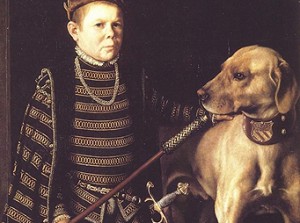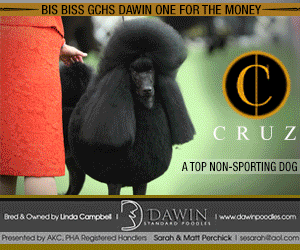Dogs And Dwarfs – Dogs in Historical Art
184 – April 2017
text and illustrations by Ria Hörter
 WHAT DO WE SEE?
WHAT DO WE SEE?
Paintings of dogs portrayed with a dwarf became popular in the 16th and 17th centuries. Dwarfs were common at nearly every Euro- pean court; the Spanish royal court had more than 100 dwarfs. They were objectified status symbols – court jesters, and kept to provide entertainment. They were given as gifts to fel- low kings and queens; some were sold among royal families. Sometimes a royal bride would receive a dwarf as a wedding gift. Neverthe- less, dwarfs had a good position at the royal courts. They danced at parties, made jokes, made music and were mimics, sometimes of their royal owners. On the one hand they got a lot of attention, but on the other, they were sometimes treated very badly. In general, they were considered slip-ups of nature.
LIKE MEMBERS OF THE FAMILY
The dwarfs’ owners showed them off and dressed them in expensive clothing; artists were commissioned to paint their portraits. Sovereigns and their children were portrayed with a dwarf, but the most interesting paint- ings show a dog and a dwarf. Some dogs were painted with a dwarf to emphasize both their sizes. Some paintings are mildly humorous, but overall they feel awkward. I did not find any paintings with dogs and dwarfs at north- ern European courts; most such paintings were made in Spain, Italy and France. When morality changed in the 18th and 19th cen- turies and people were no longer considered somebody’s property, dwarfs ceased to be seen as part of court life.
Click here to read the complete article184 – April 2017
Short URL: https://caninechronicle.com/?p=123164
Comments are closed











